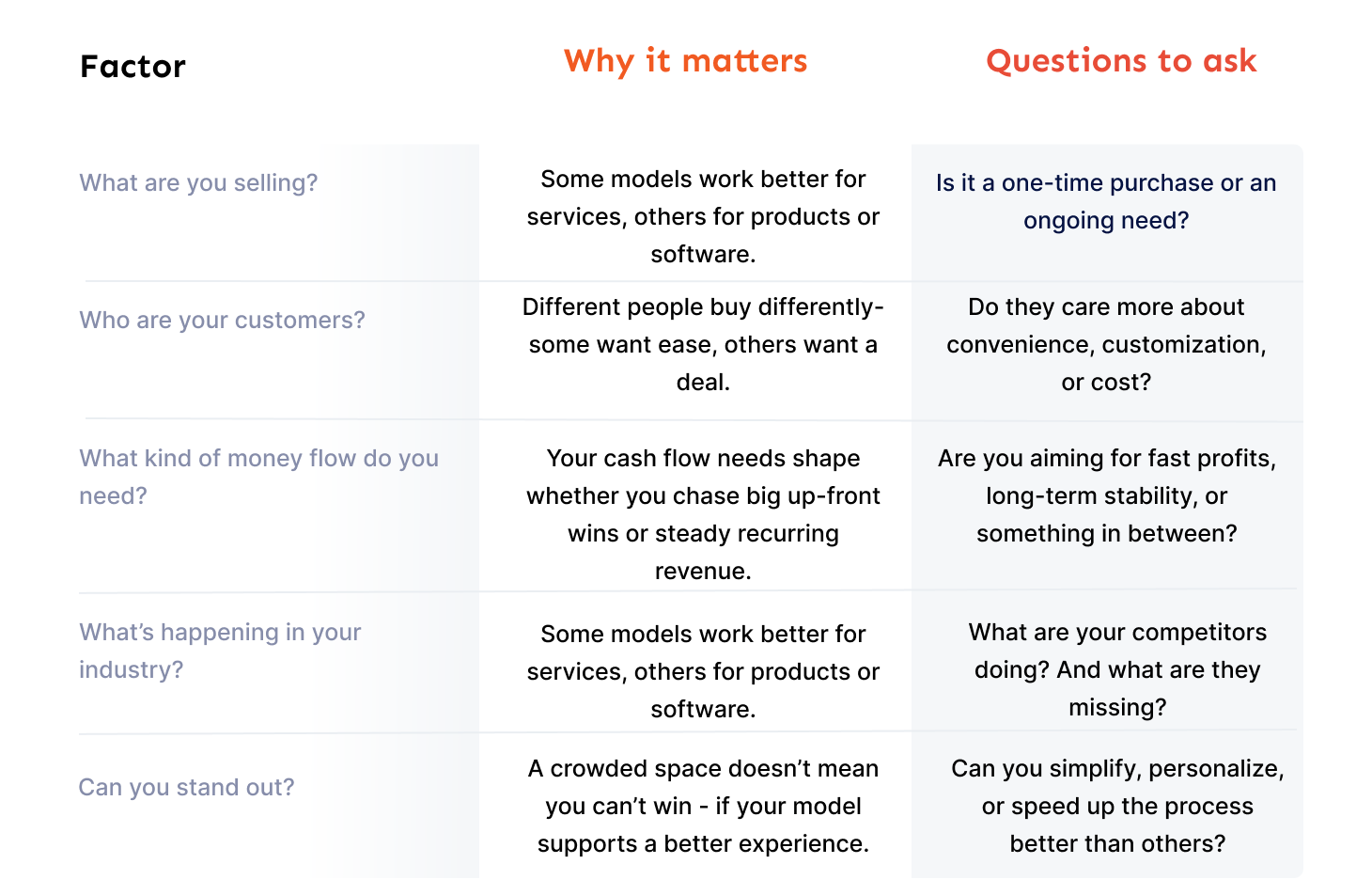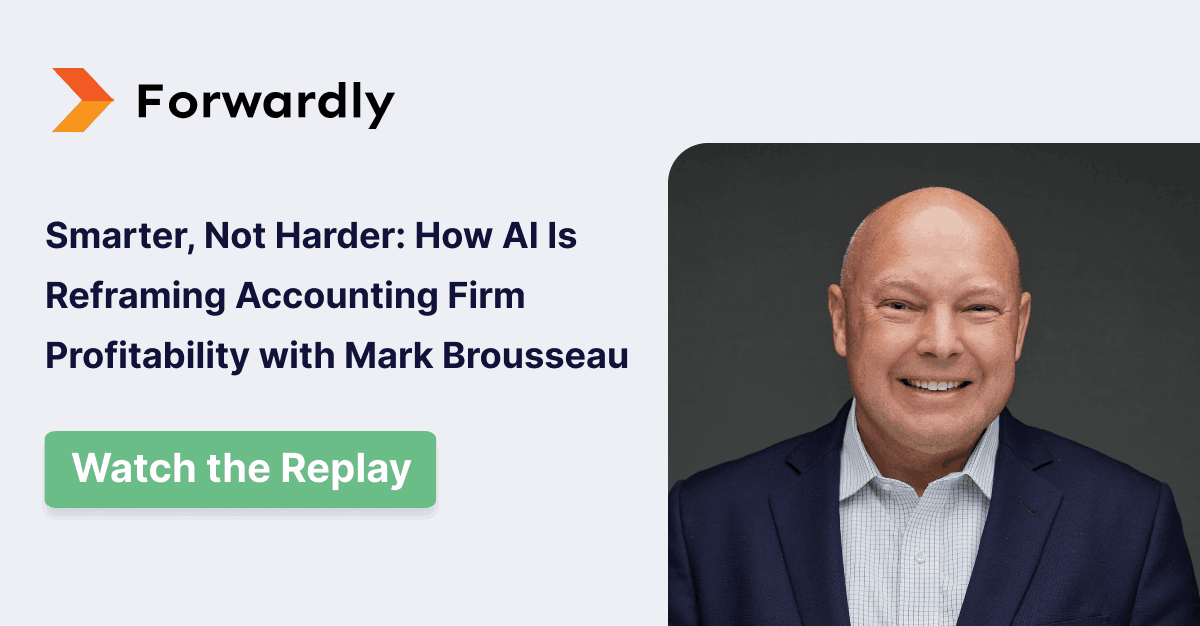What are the secrets behind successful businesses? One of them is a smart, sustainable business model. Whether you’re launching a startup or pivoting your current strategy, choosing the right types of business models is key. Your business model isn’t just a framework, it’s the foundation for how you deliver value, reach your customers, and stay profitable, all rolled into one.
The most important part is understanding which model is right for you.
Let’s break down 10 of the most common types of business models, explore real-world examples, and help you figure out which path fits your goals and market.
What is a business model?
Primarily, a business model describes how your company creates, delivers, and captures value. It’s your plan for making money, but also for sustaining it.
A strong business model does three things:
- It makes your product or service seamlessly accessible to your target audience.
- It supports a consistent stream of revenue.
- It makes it possible to expand and adapt to changing trends.
- It offers growth opportunities.
Choosing the right business model early helps avoid wasted resources and time (which is the most precious resource for a business) and aligns your pricing, marketing, and operations with your long-term vision.
10 common types of business models you should know
Not every business is built the same, and that’s a good thing. Below are 10 tried-and-tested models, along with pros, cons, and real-world examples to help you spot what fits your goals and workflow.
Product-based model – Sell products, build loyalty
It’s a straightforward model – You make or source products, and customers buy them. Simple.
However, companies like Apple have turned it into an art. Apple doesn’t just sell phones. They sell an ecosystem. From iPhones to MacBooks to AirPods, every product is designed to work seamlessly together. The product-based model becomes sticky when users buy more than just products; they buy into the experience.
Pros: Clear value exchange, great for branding and customer loyalty.
Cons: Requires inventory, upfront investment, and logistics planning.
Ideal if you’re building a physical brand, selling DTC (direct to consumer), or launching a retail product line.
Service-based model – Monetize your time
Not selling a product? Sell your time and expertise rather. Whether you’re a marketing consultant, financial planner, or freelancer, you’re simply exchanging your skills for money. A great example is Deloitte, which is one of the “Big 4” accounting and professional services firms offering audits, consulting, tax, and advisory services across sectors. They integrate deeply with client operations, acting as strategic partners in transformation.
Pros: Low startup costs, high margins with specialization.
Cons: Harder to scale, often tied to your availability.
Great for professionals and small teams delivering tailored work or advice.
Subscription model – Turn customers into subscribers
Subscription models are your recurring revenue engines. They flip the script from one-time purchases to long-term relationships with the customers. While talking about subscriptions, who doesn’t recognise Spotify? Its value isn’t just the music – it’s an uninterrupted experience. On the other hand, Netflix wins, too, because of content depth and unmatchable personalizations. The focus in this model shifts from selling to continuously earning trust, so the churn is minimized.
Pros: Predictable revenue and long-term relationships.
Cons: You’ll need to constantly prove your value to avoid churn.
Works well for digital platforms, media companies, or any business offering ongoing value.
Freemium model – Attract with free, monetize with value
Freemium models are pretty simple. Cast a wide net and then convert. Consider Canva, a great hit of a Freemium model. With Canva, anyone can become a designer for free. But once you become adept and require premium assets or features, it nudges you to upgrade. By then, customers were already smitten by the ease of working with Canva, so they did not hesitate to put those card digits and access a world of millions of possibilities. That’s Freemium, which is where you attract with free and monetize with value.
Pros: Large user base potential, viral growth.
Cons: Conversion to paid can be tricky without clear feature differentiation.
Perfect for tech platforms, SaaS, or apps targeting mass adoption.
Marketplace model – Be the matchmaker
There’s not a single soul who doesn’t know about Amazon. It lets sellers list their goods, and buyers choose from a variety of them. Amazon just handles fulfilment. What about Airbnb? It simply connects travellers and hosts, becoming the bridge. That’s what a marketplace model is. You don’t sell products but enable transactions.
Pros: Scales fast, leverages others’ inventory.
Cons: Requires trust, security, and a strong user base on both sides.
Best for tech-savvy founders looking to build ecosystem businesses.
Franchise Model – Clone Success
Imagine your business is a hit, and you want to clone success in some other part of the city or the world. It’s the basic definition of a franchise model. McDonald’s could be your favorite fast-food chain – but it is a franchise empire on its own. They built a replicable system with tight brand control. Franchise buys into the process, and McDonald’ earns from royalties, support fees, and global scale.
Pros: Rapid expansion, consistent revenue from fees and royalties.
Cons: High setup cost, and quality control across locations is critical.
Ideal if you’ve nailed a replicable process and want to grow fast without managing every location.
Aggregator model – own the experience
As the word “aggregator” suggests, in this model one curates and delivers services under one brand. Uber doesn’t own cars of its own, but it owns customer experience. Its consistency keeps users coming back. By centralizing the booking, rating and payment process under one app, Uber maintains brand trust and usability regardless of who is providing the ride. DoorDash does the same by standardizing food delivery across thousands of restaurants, offering customers a reliable interface and service guarantee.
Pros: Powerful brand control, asset-light growth.
Cons: Thin margins and operational complexity.
Works well for tech-first businesses that simplify fragmented industries.
Affiliate model – Monetize influence
You don’t have to deal with the headache of manufacturing products or spending a fortune on sales, marketing, and R&D. Rather, you promote others’ products and earn a cut. Yes, that’s your affiliate model.
Whether it’s tech gear on YouTube or makeup on Instagram, affiliate links turn influence into income. There are thousands of content creators today who build trust with their audience by sharing honest reviews and curated recommendations. When a follower clicks a link and makes a purchase, the creator earns a commission, making it a powerful model for niche creators with loyal communities.
Pros: No inventory, flexible income stream.
Cons: Limited control and relies on consistent traffic or audience trust.
A go-to model for bloggers, influencers, or niche websites.
Razor-and-blade model – Profit with add-ons
You hook customers with a core product, then profit from the add-ons. Gillette practically gives away the razor, knowing you’ll need to keep buying blades. This model builds loyalty through repeat purchases. It works by lowering the barrier to entry with an affordable – or sometimes free – core product, then generating consistent revenue from refills or accessories that are essential to its use. Today, we see the same logic in Nespresso pods, printer ink, electric toothbrush heads, and even gaming consoles that depend on game or subscription purchases.
Pros: Recurring sales, high retention.
Cons: Requires steady demand for refills.
Great for consumables or products with built-in replenishment cycles.
Licensing model – Profit from what you own
Own intellectual property? License it. Microsoft charges per seat or user, giving others the right to use their software. This model allows companies to monetize their innovations, tools or software or any branded content. It’s particularly effective in sectors like enterprise software, entertainment, and industrial design, where scalability and protection of rights are essential.
Pros: Scalable, often passive income once set up.
Cons: Legal agreements and IP enforcement can get complex.
Perfect for software, content creators, inventors, and brands protecting proprietary assets.
Finding the model that matches your vision
Start by asking a few primary questions about your business. Your answers will guide you toward the models that actually make sense for what you’re building.

Heads up- You don’t have to pick just one model and stick with it forever. Many businesses layer models over time. For example, a coaching business might start with 1-on-1 sessions, then launch a digital course or subscription for extra resources.
The type of business model you choose shapes your growth, customers and vendor relationships, and cash flow. And while there’s no one-size-fits-all answer, understanding your options, and your goals – gives you the power to choose wisely.
 Back to Blog
Back to Blog


